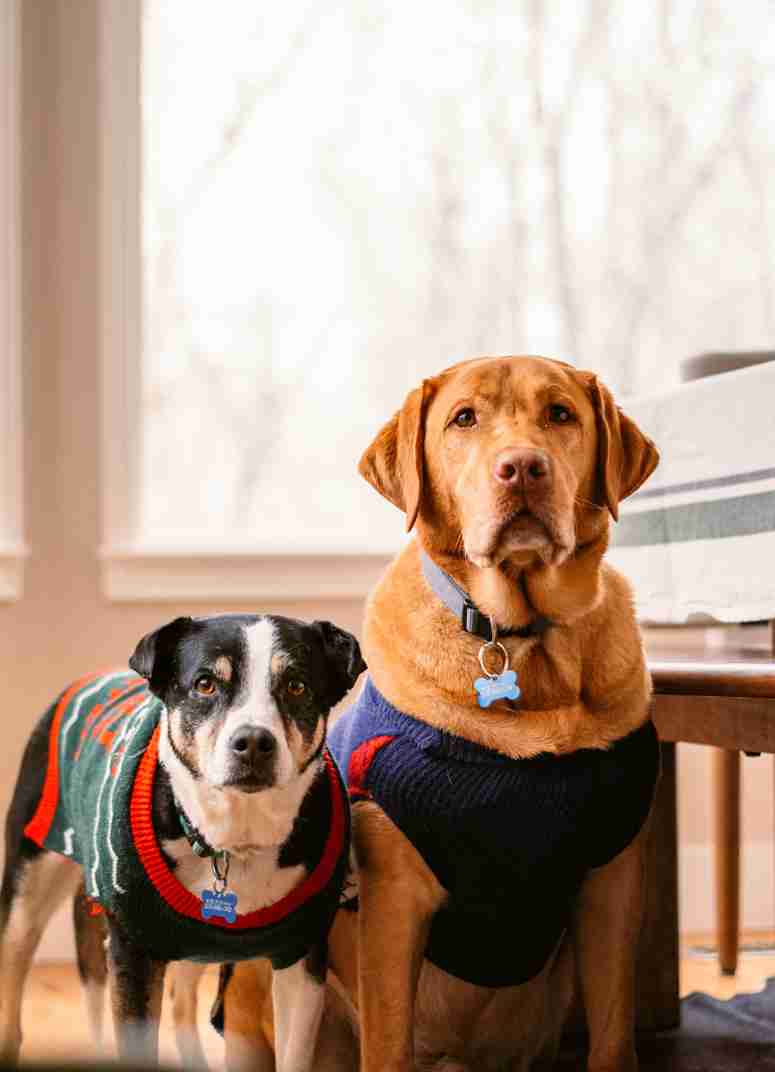Essential Winter Care Tips to Keep Your Dog Cozy and Safe!
Winter can be a magical time of year, but for our dogs, it also brings challenges. Just like us, dogs need special care to stay warm and healthy during the cold months. Whether it's frosty walks, icy paws, or the chill of winter winds, taking steps to protect your dog from the elements will ensure they stay comfortable and happy. Follow these tips while providing Bowlers’ nutrient-packed meals for optimal health and happiness this winter:
1. Keep Them Warm with Proper Gear

One of the most essential winter care tips is to make sure your dog stays warm when temperatures drop. Some dogs are better suited for the cold, like Huskies or Malamutes, but many breeds will need extra help.
- Dog Sweaters and Jackets: For short-haired or small dogs, a sweater or jacket is essential when heading outside. Choose a well-fitted coat that covers their body, especially around the neck and chest, which are areas prone to losing heat.
- Boots for Paws: Icy sidewalks and snow can be hard on your dog’s paws, causing them to dry out, crack, or become irritated by road salt. Dog boots can protect their paws, providing insulation and traction on slippery surfaces.
- Indoor Warmth: Make sure your dog has a cozy bed in a warm area of your home, away from drafts. Blankets and heated pet pads can provide extra comfort during particularly cold night.
2. Adjust Outdoor Time
While dogs still need their daily exercise during winter, it’s important to adjust their time outdoors based on the weather and their tolerance to the cold.
- Shorter Walks: If it's freezing outside, consider shortening the duration of your walks. A few quick strolls throughout the day might be better than one long one. Keep an eye on your dog for signs of cold, like shivering or lifting their paws off the ground.
- Watch for Hypothermia and Frostbite: Hypothermia can set in quickly if a dog is exposed to freezing temperatures for too long. Signs include shivering, lethargy, or confusion. Frostbite can affect extremities such as the ears, paws, and tail. If you suspect either, bring your dog inside immediately and contact a vet.
3. Paw Care and Protection
Your dog’s paws can suffer in the winter from a combination of cold surfaces, ice, and salt.
- Paw Balm: Applying a paw balm before and after walks can help keep paws moisturized and prevent cracking. There are specific balms designed to protect against the cold, acting as a barrier between their paws and the ground.
- Salt and Ice Removal: Always check your dog’s paws after a walk for ice or salt build-up. Salt used to de-ice roads can cause irritation, so it’s important to wipe their paws with a warm, damp cloth after each walk. This prevents them from licking salt off, which can also be harmful.
4. Keep Hydration in Check

Dogs can become dehydrated just as easily in the winter as in the summer. The air tends to be drier in colder months, which can reduce your dog’s natural thirst, but they still need plenty of water.
- Fresh Water: Make sure your dog has access to clean, fresh water at all times, especially after outdoor activity. If your dog spends any time outside, ensure their water dish doesn’t freeze.
- Moisturizing Foods: In addition to keeping them hydrated, add Bowlers moisture-rich wet dog food to their diet. Keep fresh water available all the time.
5. Monitor Their Weight
Winter means less outdoor play, and dogs, like people, can put on weight. However, some dogs may also lose weight in the winter as their bodies burn more energy to stay warm.
- Monitor Food Intake: Be mindful of your dog’s diet and adjust their food portions accordingly. If they're more active in the cold, they may need more calories, but if they’re less active, cutting back a bit can prevent unnecessary weight gain.
- Stay Active Indoors: On particularly cold days, when outdoor play isn’t possible, try indoor activities. Tug-of-war, puzzle toys, or even creating a small indoor obstacle course can keep your dog active without needing to venture into the cold.
6. Stay Visible During Walks

Winter means shorter days, and with darkness setting in earlier, it's important to stay visible during evening walks.
- Reflective Gear: Equip your dog with Bowlers reflective collars, leashes, or vests to make sure they’re visible to cars or cyclists. You can also carry a flashlight or attach a small light to your dog’s collar for extra visibility.
7. Provide Extra Comfort for Senior Dogs
Senior dogs are more susceptible to the cold, especially if they suffer from arthritis or joint issues.
- Heated Bedding: Provide older dogs with heated pet beds or extra blankets to help soothe achy joints. Keeping them warm can reduce stiffness, especially first thing in the morning or after a nap.
- Joint Support Nutrition: Bowlers meals include glucosamine and chondroitin to support joint health, mobility, and comfort, keeping senior dogs mobile and pain-free even in chilly weather

8. Be Mindful of Winter Hazards
Winter brings its own set of dangers for dogs, from antifreeze to holiday decorations.
- Antifreeze: This commonly used winter chemical is highly toxic to dogs. Its sweet taste can be appealing, so always store it safely out of reach and clean up any spills immediately.
- Holiday Hazards: Keep an eye out for holiday plants like poinsettias or holly, which can be toxic if ingested. Make sure your dog doesn’t chew on lights or decorations, and keep candles and heaters out of reach.


.jpg)
.png)

.jpg)

.jpg)
.png)


Post a comment